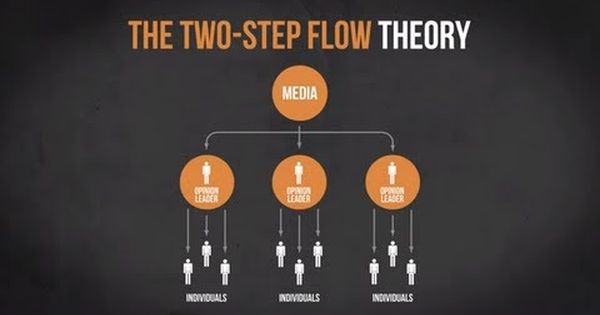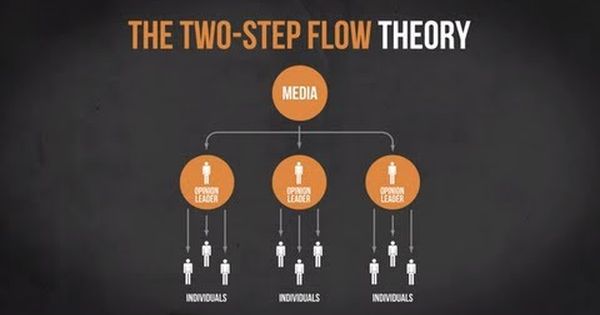In the age of social media and instant news, we often assume that information travels directly from the media to the public. However, the Two-Step Flow Theory, introduced in the 1940s, provides a more nuanced understanding of how communication actually works. This reminds us that influence is not simply directed to the public through the media, but is spread through people. In fact, most people are not directly influenced by the information source. Instead, their viewpoints are mostly shaped and guided by “opinion leaders”. These are individuals who share and interpret the themes of the content within a certain range and have greater influence.

Although the theory emerged in the mid-20th century, it remains highly relevant in the digital age. On platforms like Instagram, TikTok (Douyin), or X (Twitter), influencers and content creators act as modern opinion leaders. They interpret news, recommend products, or promote ideas to their followers. The media message still travels in two steps—first to influential figures, then to the broader audience.
However, today’s environment is more complex. The rise of micro-influencers, online communities, and algorithmic feeds means there are now multiple steps and overlapping flows of communication. However, any comprehensive assessment of mass media influence must also consider the interpersonal discussions about media content that occur over time. Thus, media influence is not limited to its audience, as media content spreads through interpersonal relationships to groups not exposed to the original message. This undermines the distinction typically used in media effects research between those who are exposed to certain messages and those who are not (Soffer,2021). This also demonstrates that the fundamental insights of the Two-Step Flow Theory remain valid in the present day.

Now, the theory encourages us to think critically about how and why we believe certain information. In an era where big data is increasingly monopolising the market, the mediating role of opinion leaders is often replaced by automated, calculated, two-step mediation. The disputes over various real-time events on social networks, the verbal battles between fans of celebrities, and even the collective cyber violence that has become increasingly common in recent years are all the same. They only tell us the information we want to see, which may have been filtered. This also reminds us that persuasion and influence are social processes, shaped by trust, credibility, and relationships. Maintain your own critical thinking about things, and still retain the ability to think independently and don’t be easily led by “opinion leaders”.
The Two-Step Flow Theory reveals that communication is not simply about broadcasting; it’s about connection. Whether through a 1940s radio show or a 2020s short video trend, ideas spread because people share, interpret, and pass them on. Media may start the conversation, but it’s humans who keep it alive.
Reference:
Soffer, Oren. Algorithmic Personalization and the Two-Step Flow of Communication, Communication Theory, Volume 31, Issue 3, August 2021, Pages 297–315, https://doi-org.uow.idm.oclc.org/10.1093/ct/qtz008
Katz, E., & Lazarsfeld, P. F. (1966). Personal influence: The part played by people in the flow of mass communications. New Brunswick (US) and London, England: Transaction Publishers (Original work published 1955).


This is an insightful reflection on how the Two-Step Flow Theory continues to evolve in the digital age. I especially like your point about transforming what was once a simple “two-step” into a multi-directional flow. You also do a good job connecting classic communication theory with current digital realities. You can consider discussing how users not only receive and share messages but also remix, imitate, or resist them.
I think the article is very well written! It accurately summarizes the core ideas of the Two-Step Flow Theory and skillfully applies them to the context of modern social media. By connecting the early concept of “opinion leaders” with today’s “influencers” and “content creators,” it allows readers to gain a clearer understanding of the concept. At the same time, the discussion about how algorithms have partially replaced traditional opinion leaders was very inspiring to me.
Well done on a great blog written on the topic of the “Two-Step Flow Theory”! Your explanation was clear and interesting. What I liked the most is how you explained the theory rather than just describing it. You mentioned that content spreads “through people,” which helped me understand that people are the fundamental and crucial factor in media growth. The way you organized your ideas also made the process of this theory very easy to follow.Moreover, you mentioned that “persuasion and influence” are social processes based on trust, credibility, and relationships. This made me reflect on an important question — how can we assess trust and credibility when using social media in today’s context?